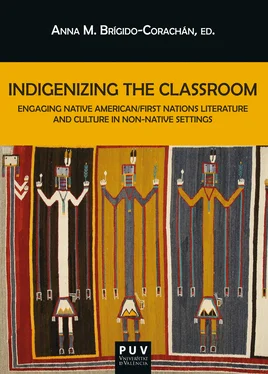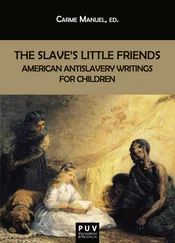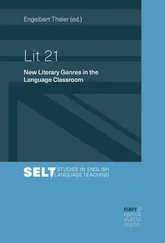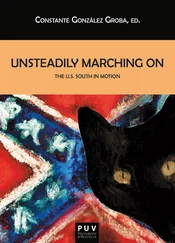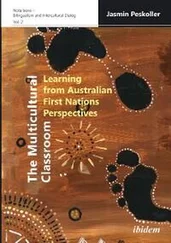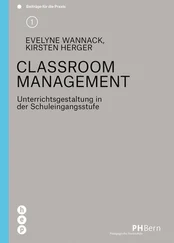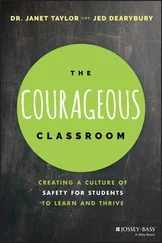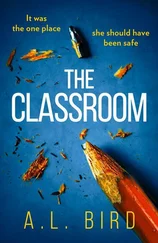29-30). 2
More must be done than that, of course, and toward that end we talk about what the students noted—typically the smell of fish, the six-pack, a “big Indian man,” and the pinch. We talk about why they remember “Indian” and six-pack as a way to begin to get them to think about the insidiousness of stereotypes and stereotypical thinking. When conversation begins to flag, I offer them again the poem, this time beginning with the title and identifying the author and her band and changing my inflection of “Dreamer” from dismissive derision to that which sounds a degree of wistfulness. They then write what stuck in their ear and mind this time. Here then we have highlighted dreams and dreamers, which takes us to the Anishinaabe creation story, as offered by Basil Johnston, and the importance of both to the People. In Johnston’s rendering, Kitche Manitou, the Great Spirit, made humans last and “though last in the order of creation, least in the order of dependence, and weakest in bodily powers, man had the greatest gift—the power to dream” (Johnston 13).
From there to the pinch, we get the students to think about what that signifies. Why not “brushes my arm,” say, or “touches my arm,” either of which would maintain the rhythm and the series of soft endings that are features of the line? A pinch startles us, makes us jump, shocks us without intending to do harm. Recognizing this enables the note of trickster to be sounded and to conjure a trickster pinch, an act that startles us into thinking and seeing anew, that enables the possibility of adopting a different perspective. Such a trickster move, one neither born of malice nor of appetite, destabilizes us in order that we might take the measure of our footing, the ground upon which we stand, and, one hopes, adopt a new stance, stand on ground newly and differently understood. 3
Eventually we get around to what they do not remark, upon either first hearing or second, and cannot get to from what has been said so far: the poem’s opening move: “Walking into Pinehurst.” The first word emphasizes both movement and verbs, the former a critical element in Anishinaabe history, culture, and lifeways, and the latter a distinguishing characteristic of Anishinaabemowin, the language of the people. Anishinaabemowin is a language of verbs more than of nouns, a rich and evolving language of action, that is, as Anishinaabe writers as seemingly different as Vizenor and Louise Erdrich have noted, rooted in the place the language was and is spoken. It is a language connected to the land itself. 4
Pinehurst, moreover, is more than just a place-name, for knowing where it is located on the White Earth Reservation gets us thinking about White Earth and why the reservation came to be located in this particular spot in Minnesota back in 1867.
Back when State leaders imagined a place to which all the Anishinaabeg of Minnesota would settle, so the story goes, they first pictured a reservation around and to the east of Leech Lake, a huge sheet of water in the north-central part of the state some fifty miles east of what would become the eastern border of the White Earth Reservation. It did not take them long to realize that the land east of Leech would not do, for the soil was too poor and there was not enough easily clearable ground to be had. What would become White Earth, on the other hand, had the right mix of ecosystems: tallgrass prairie dominating to the west, conifers and hardwoods like aspen and birch to the east, and a mixed zone in between. Pinehurst, a resort situated between north and south Twin Lakes, is in that middle zone, tending toward the boreal to the east.
What was planned failed, and there are seven Anishinaabe, or what the state and federal government call Chippewa, reservations in Minnesota today, but White Earth, situated as a contact zone where multiple forest-types and ecosystems meet and mingle, is a fitting location, for band members who are writers can turn to the contact zone that is the literary text, a place where we might unlearn the classroom so that we can begin to learn something about White Earth, the people, their literary texts, and indigeneity.
In the effort to unlearn so that we can then learn about White Earth and its people on and off the reservation, one might expect a turn from Blaeser’s “Living History” to texts rooted in history such as William Warren’s 19 thcentury History of the Ojibway People (1885), John Rogers’ Red World And White: Memories of a Chippewa Boyhood (first published in 1957), or Winona LaDuke’s historical novel Last Standing Woman (1999). Because unlearning the classroom and the academy goes hand in hand with our efforts to learn together, however, we next turn to Vizenor’s Chair of Tears (2012), a seriously playful critique of Native and Indigenous Studies programs in general and the contemporary university in particular. The novel is a seriously playful critique of Native Studies programs in general and the contemporary university in particular. In it, an academic dean with nowhere else to turn and nothing left to lose after a run of six previous chairs had failed to lead the Department of Native American Indian Studies at the University of Minnesota opts for the least qualified candidate, non-academic Captain Shammer. Indeed, Shammer had never attended university, much less earned a degree. Prior to his appointment, the department had been without vision, a Native sense of irony, or a survivance story ( Chair of Tears 27). Shammer, the narrator tells us, is not “a romancer,” not someone interested in either the romantic image of the indian or victimry; rather, “he was a teaser of manners, missions, and conventions, and more clearly sensitive to chance and situational conscience than to customary academic practices” ( Chair of Tears 34). In his first semester as chair, Shammer proclaims a number of radical edicts and makes a series of radical moves, from changing all the incompletes accumulated by the department’s students to passing grades to involving the Native community in the Twin Cities in the department’s transformation. Perhaps most radical of all, at least in terms of university space, he terminates the policy of an individual private office for each faculty member, moves the faculty to the shared space of a conference room, and changes the private offices into spaces “for specific visions and distinctive Native actions and practices” ( Chair of Tears 41).
Bringing trickster to bear early on links the course’s second text with “Living History” and its unsettling, awakening pinch, of course, but that could be done with any text by Gerald Vizenor. So could highlighting the importance of context and chance to Anishinaabe worldview and lifeways, and indeed I would go so far as to say Anishinaabemowin as well. Thus while Shammer affects transformation by trick and tease, sensitive always to “chance and situational conscience,” we turn to him and his efforts where and when we do in order to emphasize our tease of the major, the university, and learning. Beyond beginning in the dark, at the back of the room rather than the front, with the spoken rather than the written word, we play the moccasin game, 21, and, particularly, wiindigoo six card stud 5 : students are either picked by their peers or volunteer to be part of a team that plays for them all in games where what is at stake are grades on particular assignments. In the spirit of Shammer’s stray visions seminar, where the blank pages of the seminar book would be filled over the semester’s course by the students in their capacity as storiers committed to natural reason and stray vision building on what had already been written, students come to shared conclusions for the answers to quiz questions. Motivating all of this is the desire to get the students to think of themselves as, if not a community, at least a collective and to recognize that they share in the responsibility for what happens to them in and outside of the classroom.
Читать дальше
